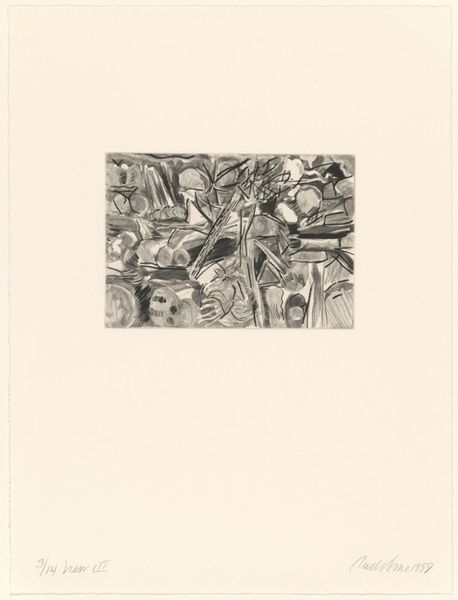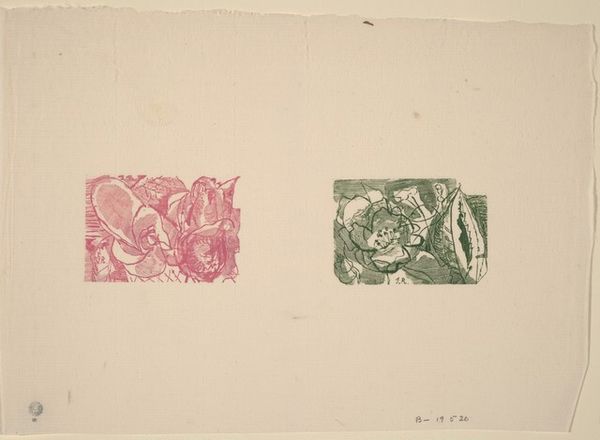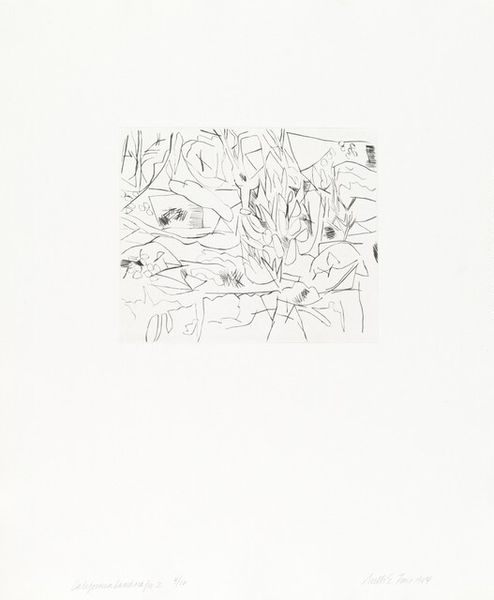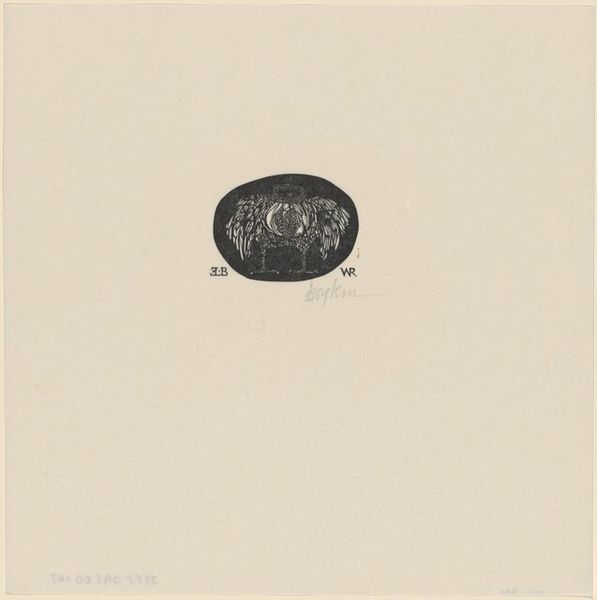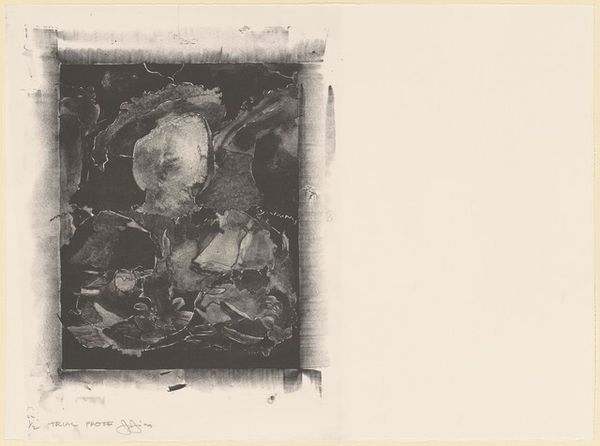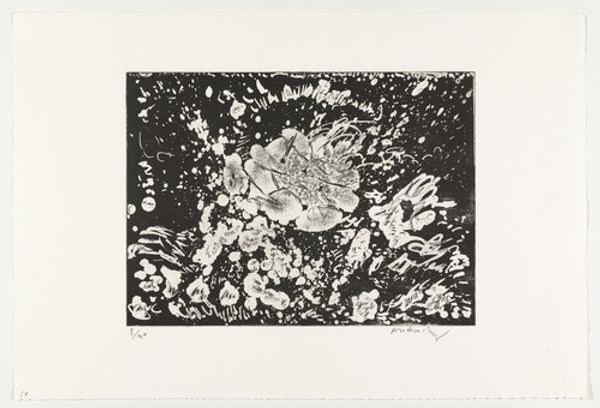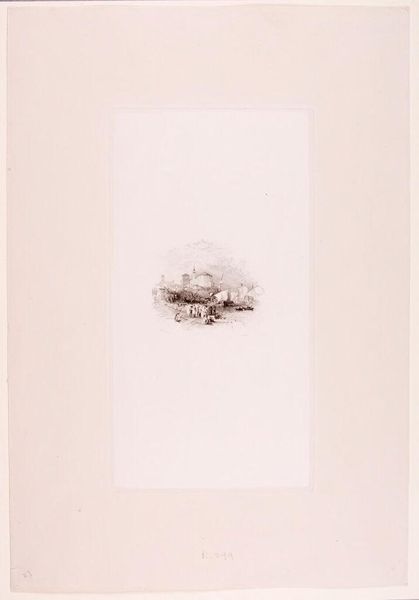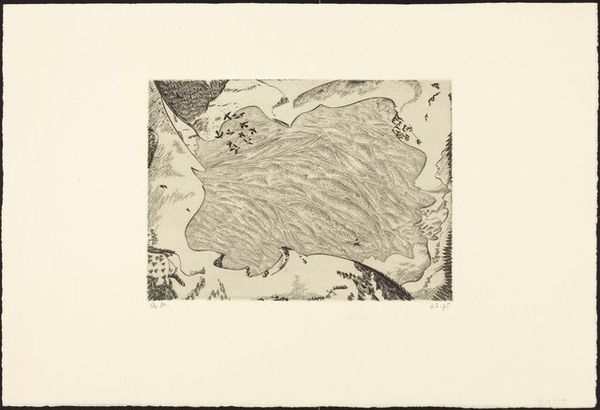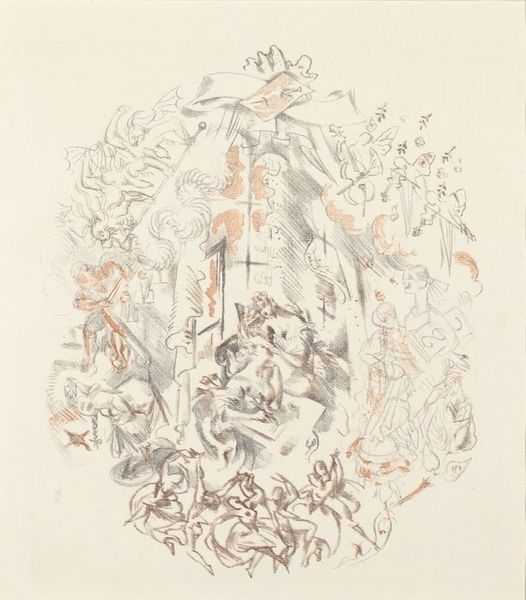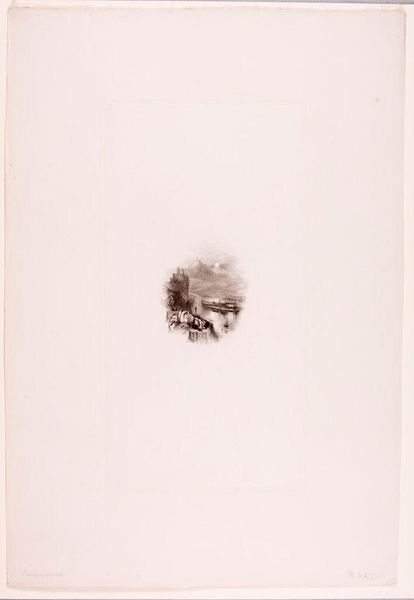
drawing, print
#
drawing
# print
#
geometric
#
line
#
monochrome
Dimensions: image: 5.4 × 5.87 cm (2 1/8 × 2 5/16 in.) sheet: 25.72 × 28.26 cm (10 1/8 × 11 1/8 in.)
Copyright: National Gallery of Art: CC0 1.0
Editor: This is Leonard Baskin's "Still Life," a print from 1953. It’s monochromatic and composed mostly of geometric and organic shapes. It feels quiet and almost unsettling, like a memory fading. What stands out to you? Curator: It strikes me as a delicate dance between decay and resilience, you know? Baskin was often preoccupied with themes of mortality. The thistles, the insect... they're not your typical, lush still life subjects. It’s a little morbid, yes, but also observant. Like a memento mori for the modern age. What do you make of the composition? Editor: I see a collection of botanical elements precisely drawn together on a small portion of the page, surrounded by empty space. I guess that empty space helps to convey the theme of isolation. Curator: Exactly! Baskin's prints have this incredible tactile quality too. I love how the sharp lines are contrasted against that flat beige paper, giving the print its almost mystical mood. Is this at all different than what you had expected when you heard the name of the work? Editor: Absolutely. A typical Still Life painting often portrays brightly colored, familiar objects, whereas this print appears raw, yet delicate in its visual language. Now that you point that out, it brings a new perspective on seeing death represented on something that is meant to reflect peace. Curator: It does, doesn't it? Perhaps that tension, that play between life and death, is what makes it so compelling. It nudges us to look closer, to consider the transient beauty of existence. Editor: This was quite insightful. Now I’m considering how different mediums affect the overall presentation. Curator: Precisely! Keep pondering. Every artwork invites its own unique form of reflection.
Comments
No comments
Be the first to comment and join the conversation on the ultimate creative platform.
